How to Create a Great Employee Handbook: Templates and Examples
Learn how to put together a genuinely helpful team handbook.
Let’s face it – the average employee handbook is not exactly a page-turner.
Often, it's a long and dreary document written entirely in dry legalese and designed to safeguard against potential workplace problems. Making your new hires read pages and pages of labor law guidelines and anti-discrimination notices is a sure way to dampen their enthusiasm on their first day.
At best, it's considered a necessary evil by both employees and employers. And some companies don't even have an employee handbook at all, leaving their new colleagues to fend for themselves and hunt for tribal knowledge on Slack.
But it doesn’t have to be that way. Let's dive deeper into how you can put together a genuinely helpful employee handbook.
- What is an employee handbook?
- Why you need an employee handbook
- How to create your own staff handbook
- What to include in your handbook
- Employee handbook template
- Real-life employee handbook examples
What is an employee handbook?
An employee handbook is a document that outlines the company policies, procedures, and working conditions, and introduces the new employee to the company culture and values. It is also referred to as a staff handbook or a staff manual. Simply put, an employee handbook introduces your new employees to your company and the way you work. It is usually written by the HR manager and shared with the new team members during the new employee onboarding process.
Here's an example of an employee handbook created in Nuclino, a unified workspace where teams can bring all their knowledge, docs, and projects together:
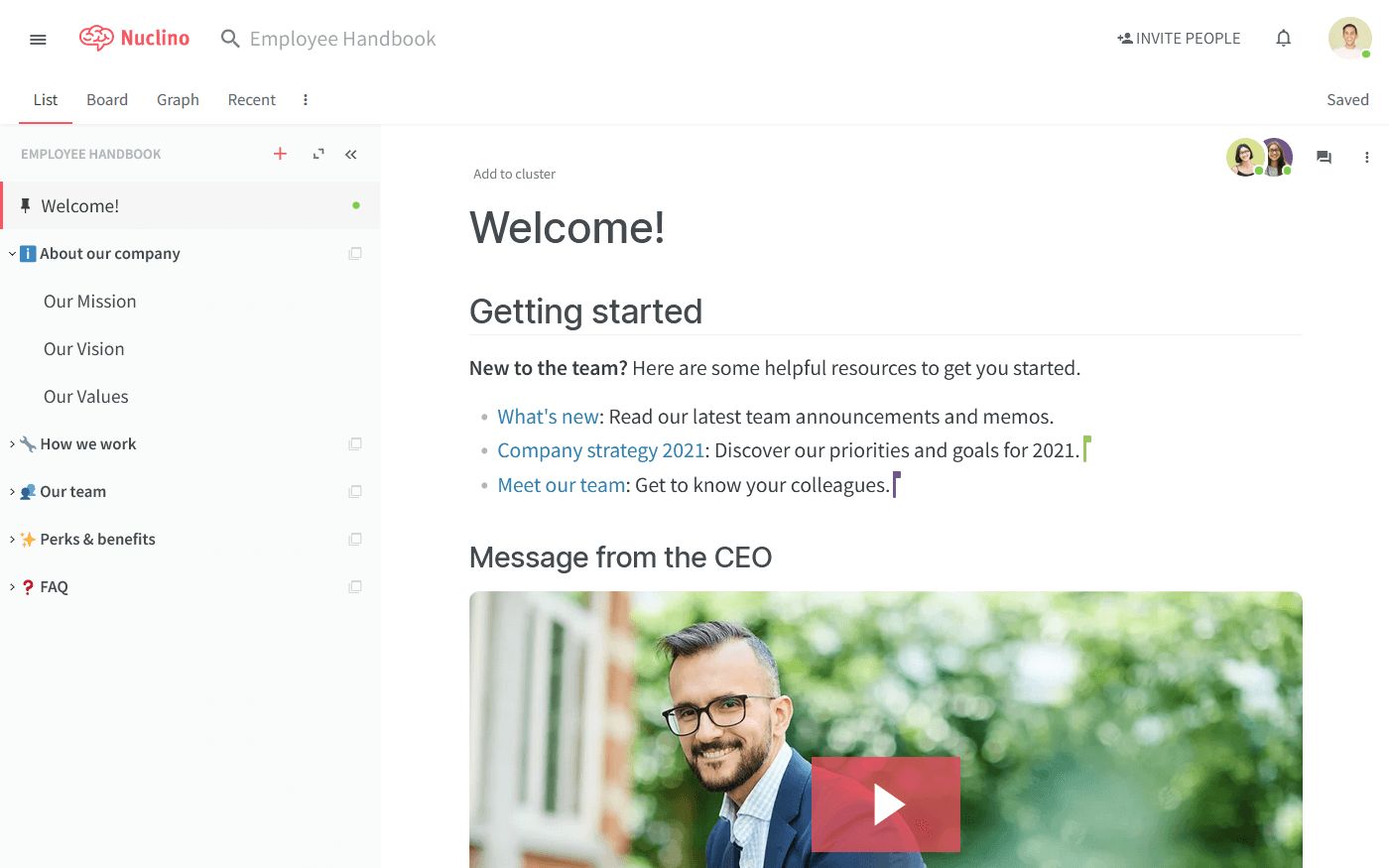
Employee handbook example in Nuclino
While every employee handbook is different, they typically include the following:
Company culture and values
Employee benefits
How-to guides and FAQs
Why you need an employee handbook
The first thing to know is that there is no law requiring you to have an employee handbook. But here's why you should have one anyway:
An employee handbook helps you share your company culture
It is designed to be the first document a new hire receives from you as you welcome them to the team, so it's a perfect opportunity to introduce your company mission, core values, and unique culture to them, increasing employee engagement and loyalty.
It creates transparency and communicates expectations
An employee handbook is a great way to inform the new hire about your company policies and regulations – dress codes, PTO policies, sick days – not only helping them feel more equipped to handle their day-to-day work, but also protecting your company from many potential legal problems.
It introduces new employees to your work environment
What do they do on their first day? How flexible are the working hours? How is their work going to be evaluated? Not clarifying these commonly asked questions will result in your employee feeling lost, tapping on the shoulders of the rest of your team.
How to create your own staff handbook
Traditional employee handbooks are obsolete. A study by XpertHR revealed that most employees don't fully read them. Millenials in particular don't find handbooks useful: according to the survey, 50% of them didn't read most of their employee handbook and 36% don't know where it is anymore.
It's not surprising. Most employee handbooks are dry and boring. They are printed out, given to the new hire, and promptly end up in their desk drawer, gathering dust.
That doesn't mean that we should do away with handbooks altogether. Instead, the handbooks need to be written in a way that makes them genuinely useful.
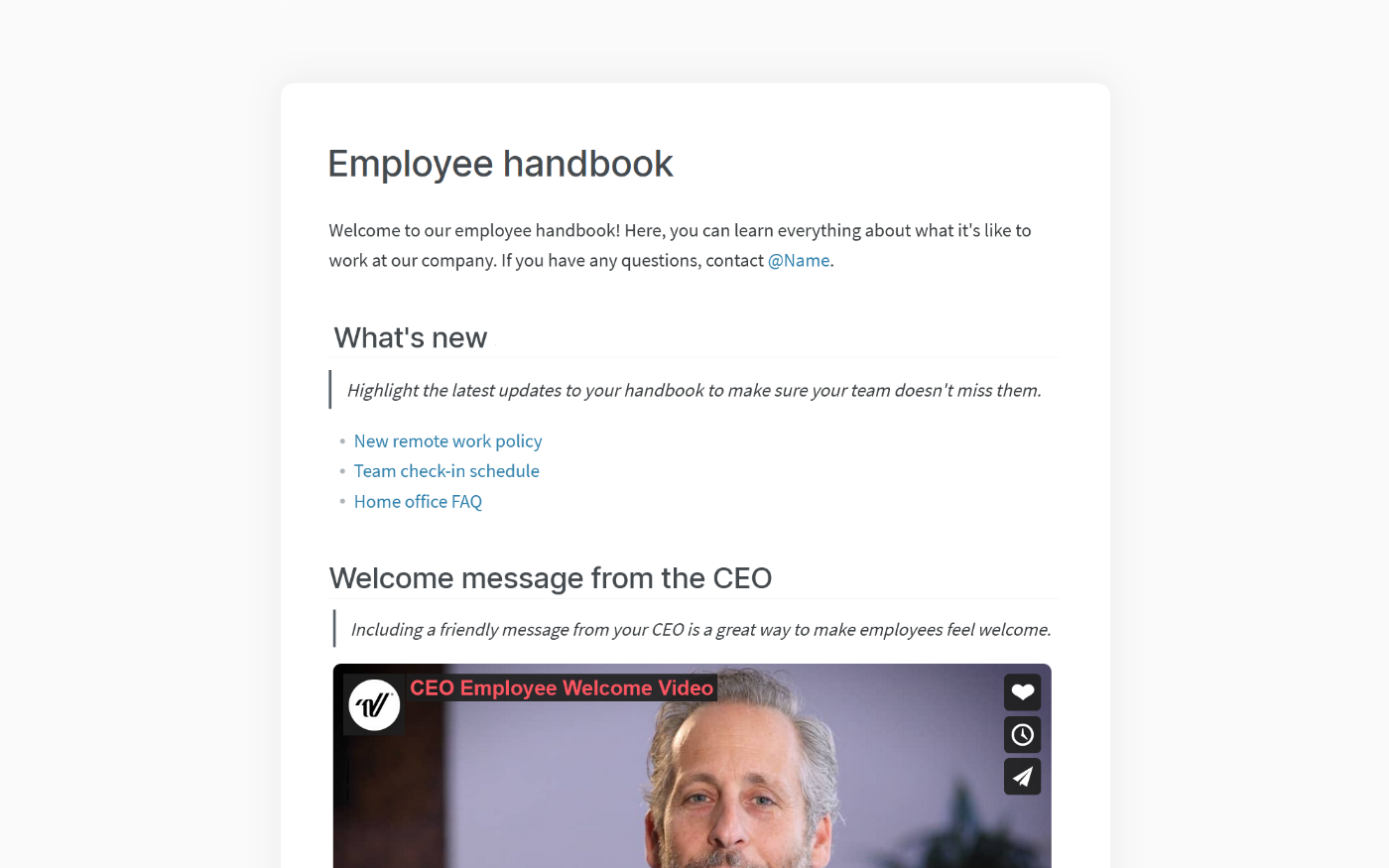
Don't print it out
There are certainly upsides to printing the employee handbook – Valve, Shopify, and Zendesk are known for their impeccably designed, printed, and bound handbooks that any employee would be excited to receive as their welcome present. But if you want it to continuously serve as a source of reference for your team, it needs to be:
Accessible to all employees
Easily searchable
Consistently up-to-date
Collaborative (so that team members can leave feedback when something needs to be corrected or improved)
This would not be possible with a printed staff manual, no matter how shiny the cover is or how crisp the pages feel. An ideal place to store your employee handbook is an internal wiki or a knowledge base. If your company doesn't have a corporate wiki yet, you can easily create one in Nuclino.
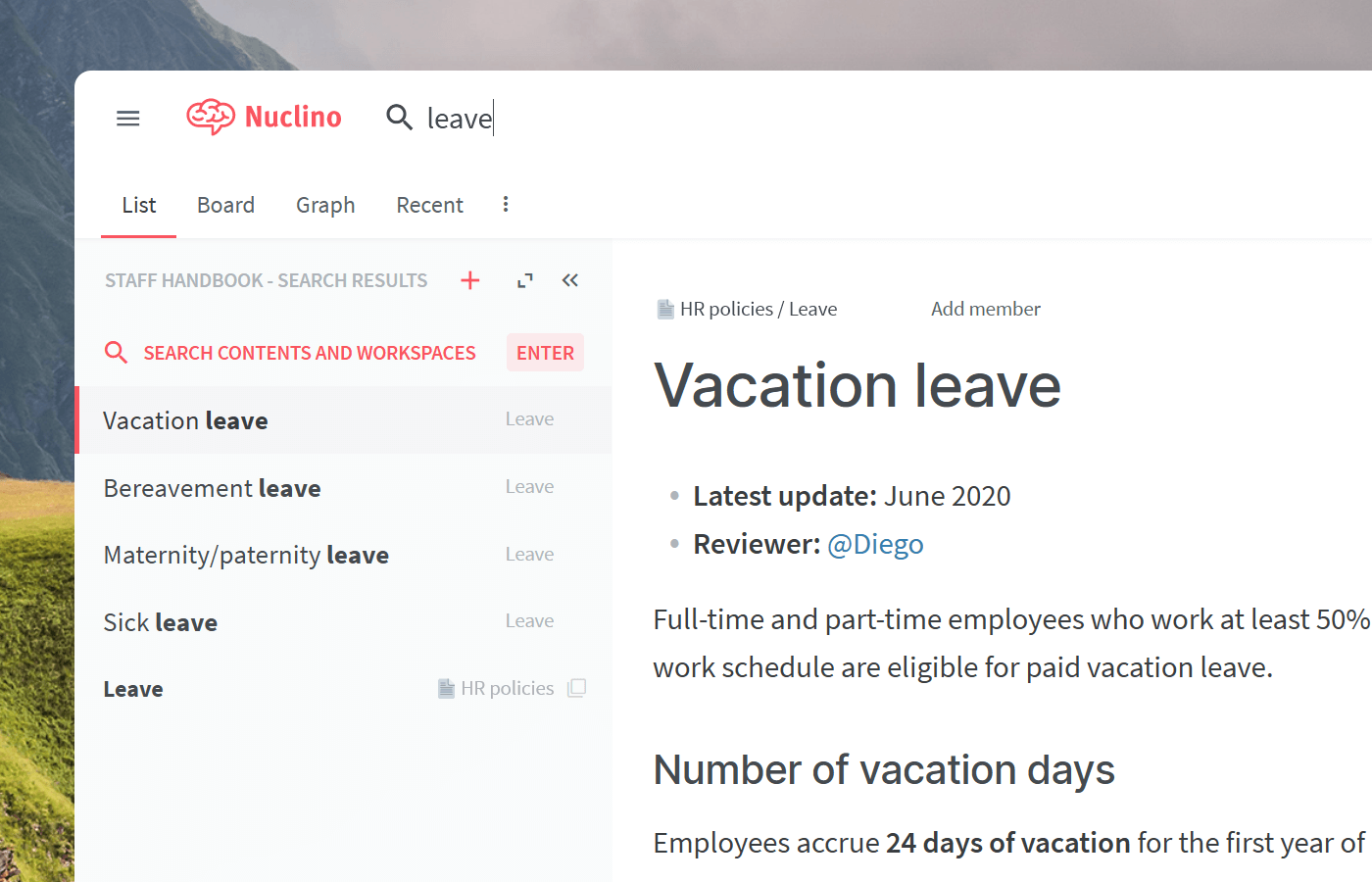
While Nuclino can be used exclusively as a platform for your employee handbook, it's a highly versatile tool that is capable of much more. It offers a variety of ways to structure and visualize your content, including a nested list, a Kanban board, a table, and a mindmap-style graph. This makes Nuclino a great solution for many additional use cases, including project collaboration, sprint planning, asynchronous communication, and more. Nuclino works like a collective brain, allowing you to collaborate without the chaos of files and folders, context switching, or silos.
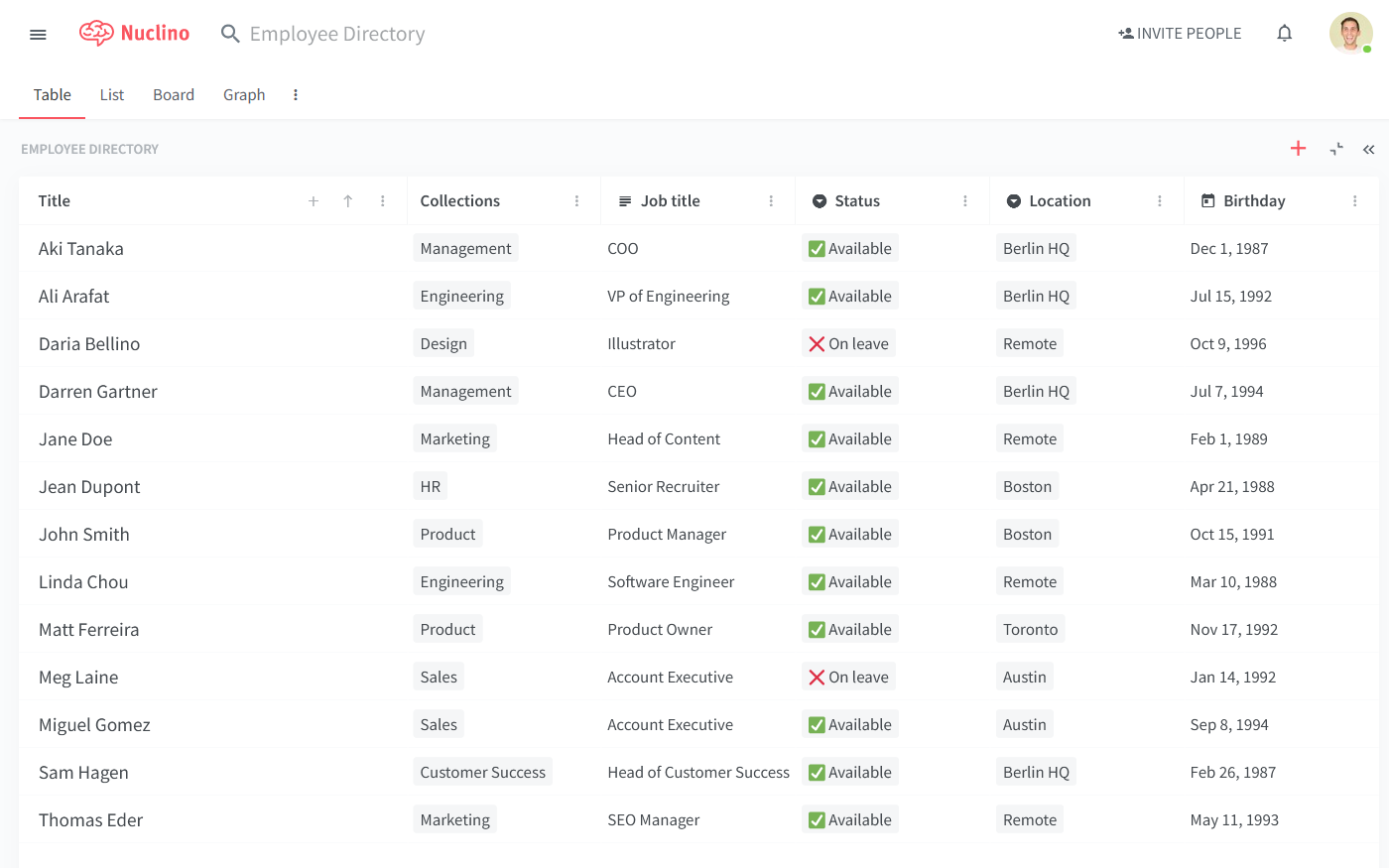
If you still prefer to provide a physical copy of your handbook, consider adding QR codes to key sections, linking employees to the latest online version. This ensures they always have access to the most up-to-date information without needing a reprint.
Keep it short
The employee handbook doesn't need to be a literal book – it doesn't even need to be a long document. As long as it gets the message across, it can be as short and succinct or as detailed and thorough as you want.
Use internal links to organize related content and let your employees browse the handbook like Wikipedia.
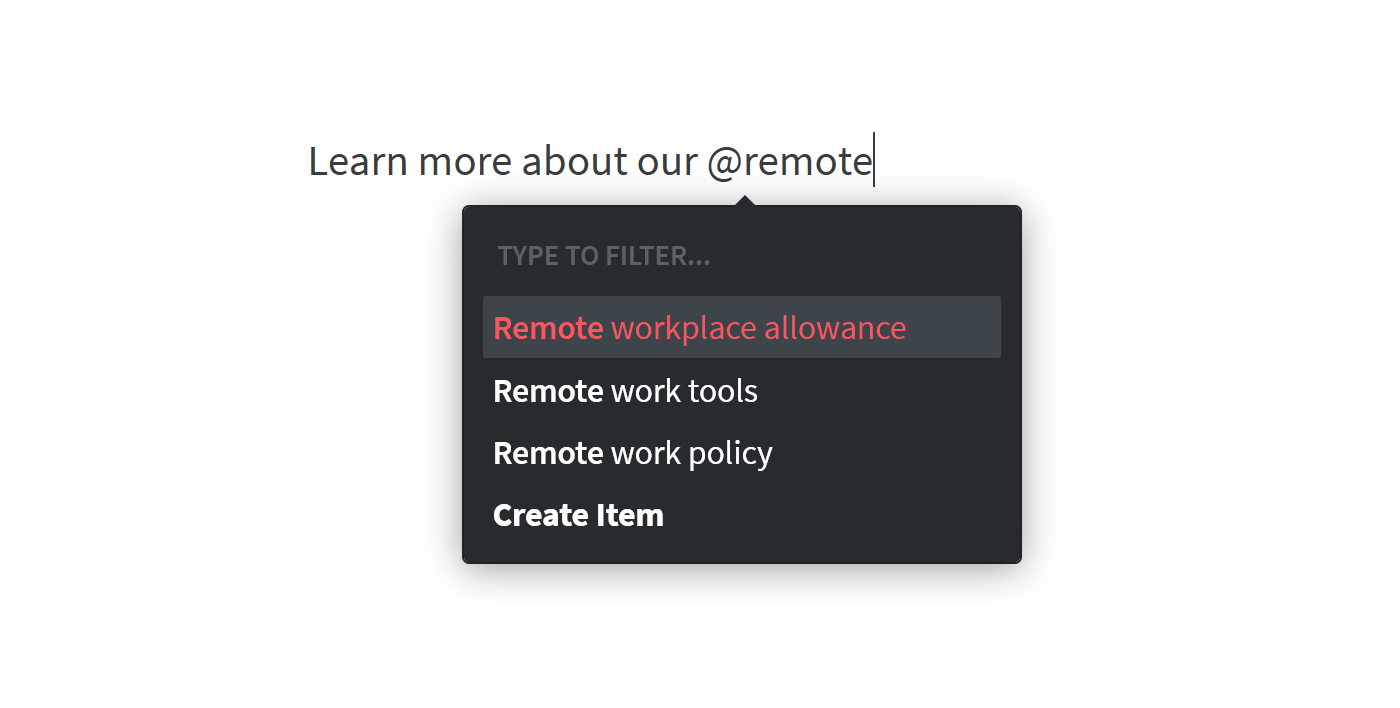
Use personal, colloquial language
Since this is primarily an employee-facing document, keep the language as conversational as you can, instead of the legal jargon native to contracts. Write in a way you talk to your favorite colleague and make sure your tone of voice matches your company’s culture.
Crowdsource it
The best employee manual is not written by your legal department – it's written by the employees themselves. Valve CEO Gabe Newell puts it best: “The culture at Valve is pretty much crowdsourced. The handbook is a wiki. One of the first things we say to new hires is, “You have to change something in the handbook.” They say, “No, it’s sacred. It’s this text of received wisdom.” Then the people who’ve been there for a long time all laugh hysterically and say, “Yeah, well, it’s your job to move it forward.”
What to include in your handbook
While every employee handbook is different, most include the following content:
Company culture, mission, and values
If your new hire made it through the selection process, you likely expect them to already know your company mission and values – but remind them anyway. After all, it's the reason they will be getting out of bed and coming to your workplace every morning.
Policies & work dynamic
Try to explain your company policies and the reasons behind them. Communicate the unspoken rules as well – what are the implicit workflows and expectations? In most companies, answers to questions like that exist only in the form of tribal knowledge, leaving newcomers to sink or swim and taking it longer for them to get up to speed and become productive team members.
Perks
If you're investing in employee perks – and you should – include them in your handbook. And don’t bury them deep in the table of contents as if afraid they would exploit them – put them front and center and make the newcomers feel appreciated!
The legal stuff
An employee handbook is a good place to outline your employees' legal rights and obligations related to employment. Besides establishing full transparency, it also helps protect your business in the unlikely worst-case scenario – getting sued.
Employee handbook template
No two employee handbooks will be the same. In fact, the entire point is for them to communicate your company culture in a unique and personal way.
However, writing one from scratch can certainly be a daunting task, and an employee handbook template may be a good starting point.

Employee handbook template (created in Nuclino)
Real-life employee handbook examples
It also helps to have examples to guide your way – here are some real-life employee handbook examples we love and continue to draw inspiration from:
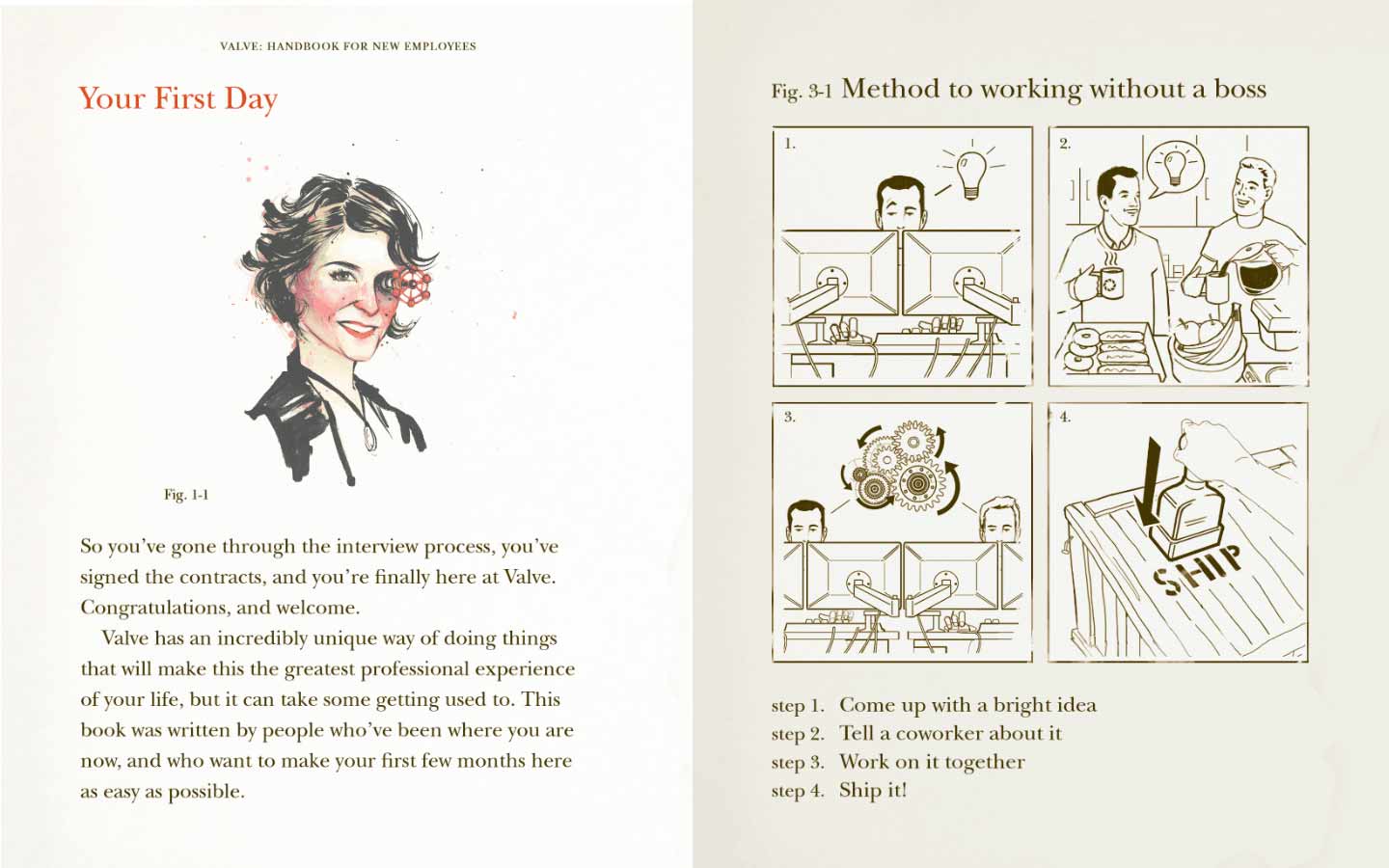
Employee handbook example from Valve
Valve: When Valve's employee handbook got leaked in 2012 it immediately went viral – and for good reason! Few handbooks are as empathetic, informative, and full of personality. It strikes a perfect balance between being humorous and helpful, and will likely remain the holy grail of employee handbooks for years to come.
Basecamp: A few years ago, Basecamp made their employee handbook available to the public and when it comes to transparency, there is no better example. It’s both a useful resource for companies looking to write their own policies from scratch, and a genuinely interesting read.
Disqus: The Disqus example is not quite a handbook in the traditional sense, but rather a “culture book” which communicates their vision, values, and beliefs in a casual, playful way, filled with team photos, memes, and jokes that reinforce their brand identity.
Nuclino: Your team's collective brain
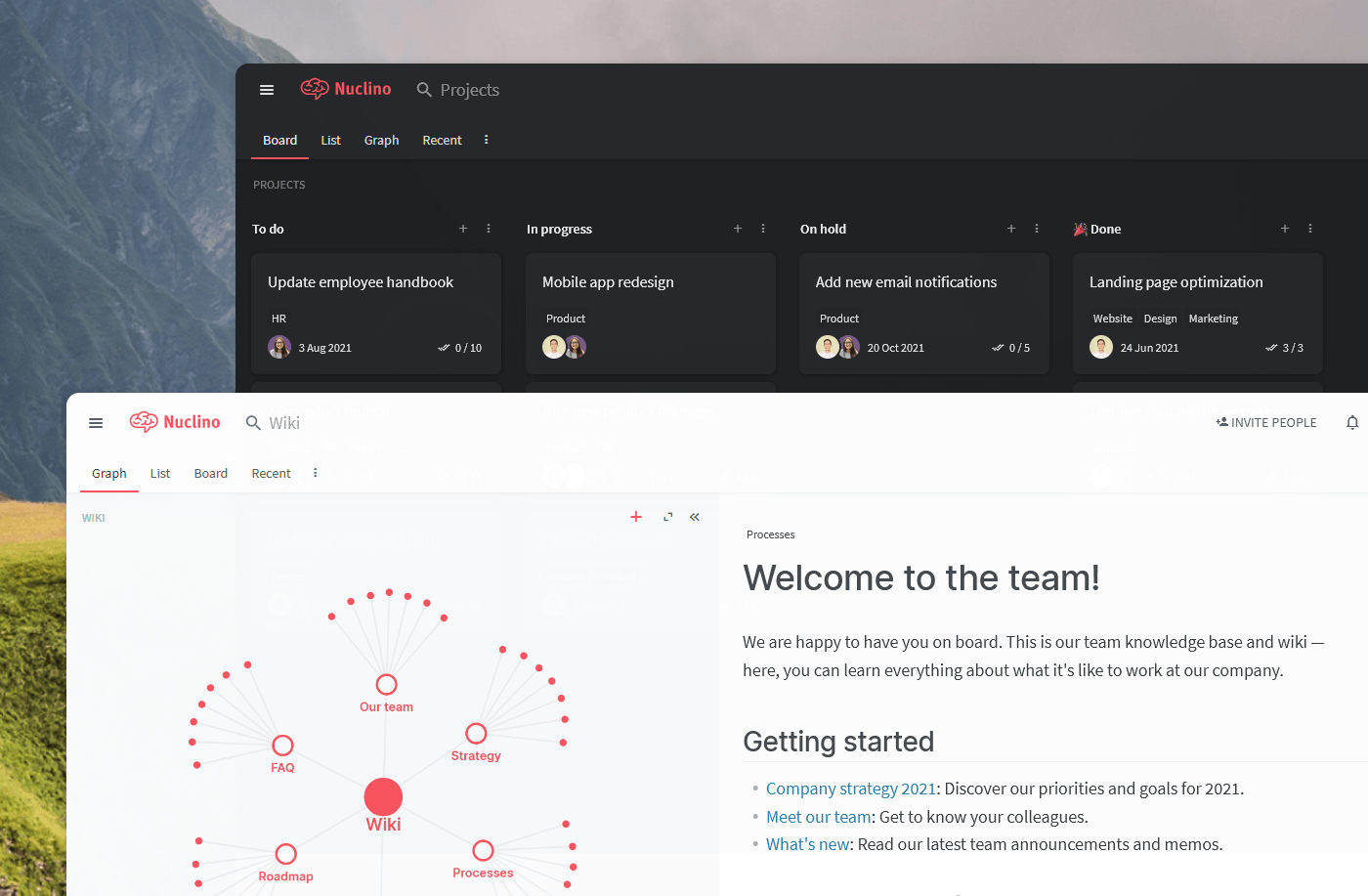
Nuclino brings all your team's knowledge, docs, and projects together in one place. It's a modern, simple, and blazingly fast way to collaborate, without the chaos of files and folders, context switching, or silos.
Create a central knowledge base and give your team a single source of truth.
Collaborate in real time or asynchronously and spend less time in meetings.
Manage and document your projects in one place without losing context.
Organize, sort, and filter all kinds of data with ease.
Integrate the tools you love, like Slack, Google Drive, Figma, Lucidchart, and more.
Ready to get started?
